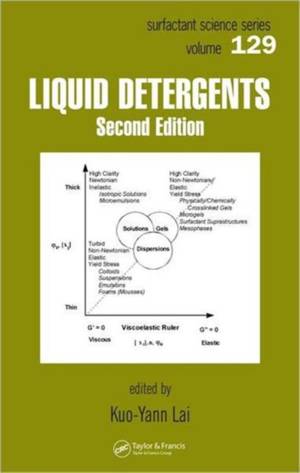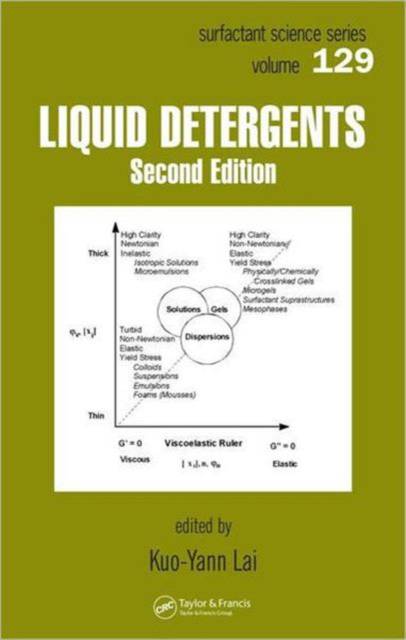
- Afhalen na 1 uur in een winkel met voorraad
- Gratis thuislevering in België vanaf € 30
- Ruim aanbod met 7 miljoen producten
- Afhalen na 1 uur in een winkel met voorraad
- Gratis thuislevering in België vanaf € 30
- Ruim aanbod met 7 miljoen producten
Zoeken
Omschrijving
A bestseller in its first edition, Liquid Detergents, Second Edition captures the most significant advances since 1996, maintaining its reputation as a first-stop reference in all fundamental theories, practical applications, and manufacturing aspects of liquid detergents. Featuring new material and updates in every chapter, the book expands its coverage of emulsions to include nanoemulsions, adds new data to elucidate the rheology of current commercial detergent raw materials as compared to finished products, and offers a more complete theoretical treatment of the aggregation in non-aqueous solvents. The book now covers all rheology modifiers and thickeners for detergent applications, antibacterial and sensorial light-duty liquid products, color/fabric care and wrinkle reduction in heavy-duty liquid detergents, and household cleaning wipes in specialty liquid household surface cleaners. Rewriting the chapters on the latest improvements and growing benefits in fabric softeners, liquid hand soaps and body washes, and shampoos and conditioners, the latter contains extensive summaries of patents for various new products and technologies. The final chapter, dedicated to the manufacturing of liquid detergents, offers a discussion on continuous vs. batch processes and micro-contamination. The most comprehensive guide of its kind, Liquid Detergents, Second Edition, is a balanced and practical reference that will continue to inspire students, researchers, chemists, and product developers in detergent industry, surfactant science and industrial chemistry.
Specificaties
Betrokkenen
- Uitgeverij:
Inhoud
- Aantal bladzijden:
- 712
- Taal:
- Engels
- Reeks:
Eigenschappen
- Productcode (EAN):
- 9780824758356
- Verschijningsdatum:
- 1/08/2005
- Uitvoering:
- Hardcover
- Formaat:
- Genaaid
- Afmetingen:
- 161 mm x 236 mm
- Gewicht:
- 1079 g

Alleen bij Standaard Boekhandel
+ 702 punten op je klantenkaart van Standaard Boekhandel
Beoordelingen
We publiceren alleen reviews die voldoen aan de voorwaarden voor reviews. Bekijk onze voorwaarden voor reviews.










